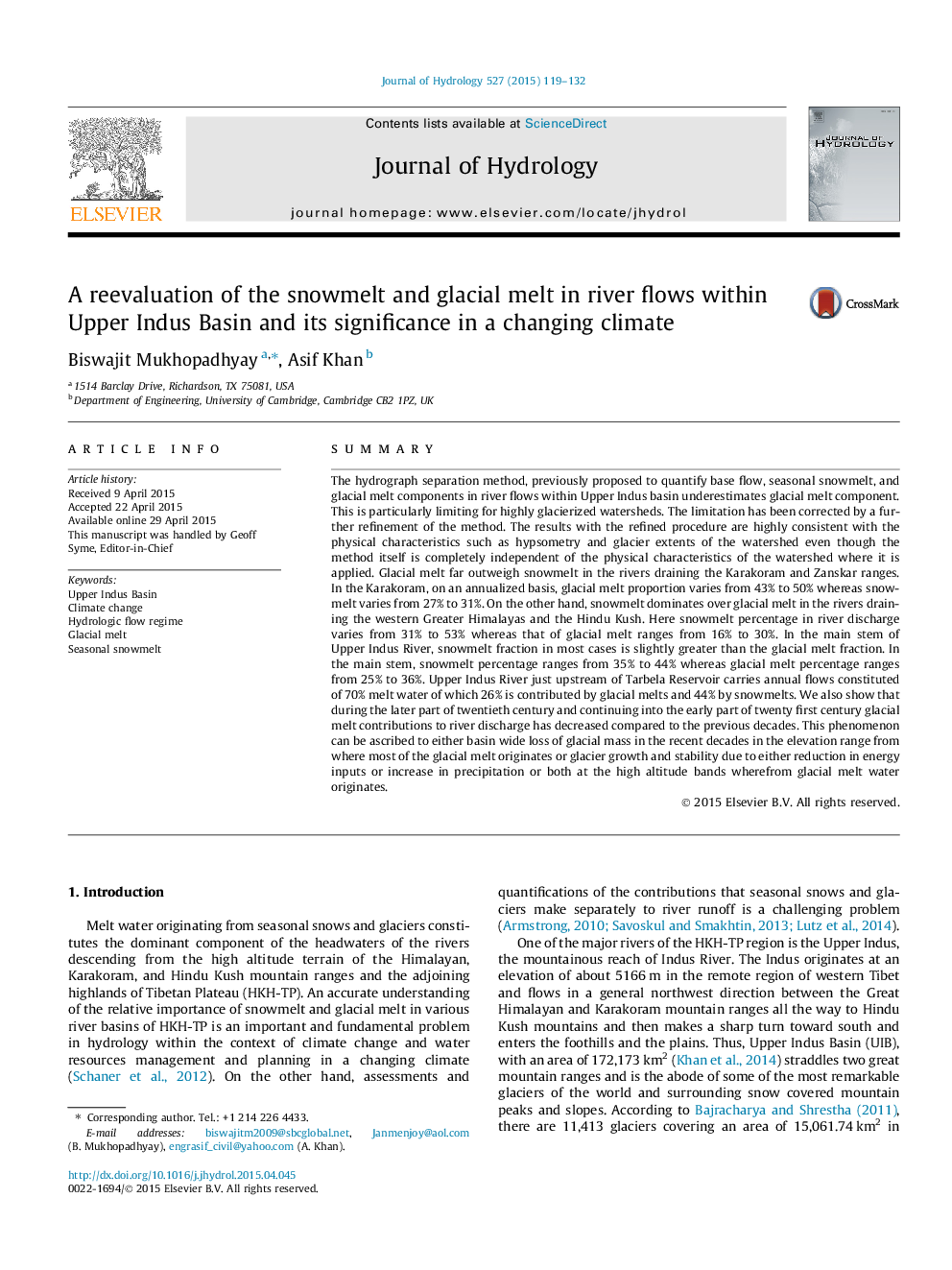| کد مقاله | کد نشریه | سال انتشار | مقاله انگلیسی | نسخه تمام متن |
|---|---|---|---|---|
| 6411045 | 1629923 | 2015 | 14 صفحه PDF | دانلود رایگان |
- Hydrograph separation method is refined.
- Better estimates of snowmelt and glacial melt fractions in river flows.
- Estimates are in line with glacial hypsometry of the watersheds.
- Applications are made to annual hydrographs of different periods.
- Basin wide decrease in glacial melt fractions during the recent decades is detected.
SummaryThe hydrograph separation method, previously proposed to quantify base flow, seasonal snowmelt, and glacial melt components in river flows within Upper Indus basin underestimates glacial melt component. This is particularly limiting for highly glacierized watersheds. The limitation has been corrected by a further refinement of the method. The results with the refined procedure are highly consistent with the physical characteristics such as hypsometry and glacier extents of the watershed even though the method itself is completely independent of the physical characteristics of the watershed where it is applied. Glacial melt far outweigh snowmelt in the rivers draining the Karakoram and Zanskar ranges. In the Karakoram, on an annualized basis, glacial melt proportion varies from 43% to 50% whereas snowmelt varies from 27% to 31%. On the other hand, snowmelt dominates over glacial melt in the rivers draining the western Greater Himalayas and the Hindu Kush. Here snowmelt percentage in river discharge varies from 31% to 53% whereas that of glacial melt ranges from 16% to 30%. In the main stem of Upper Indus River, snowmelt fraction in most cases is slightly greater than the glacial melt fraction. In the main stem, snowmelt percentage ranges from 35% to 44% whereas glacial melt percentage ranges from 25% to 36%. Upper Indus River just upstream of Tarbela Reservoir carries annual flows constituted of 70% melt water of which 26% is contributed by glacial melts and 44% by snowmelts. We also show that during the later part of twentieth century and continuing into the early part of twenty first century glacial melt contributions to river discharge has decreased compared to the previous decades. This phenomenon can be ascribed to either basin wide loss of glacial mass in the recent decades in the elevation range from where most of the glacial melt originates or glacier growth and stability due to either reduction in energy inputs or increase in precipitation or both at the high altitude bands wherefrom glacial melt water originates.
Journal: Journal of Hydrology - Volume 527, August 2015, Pages 119-132
